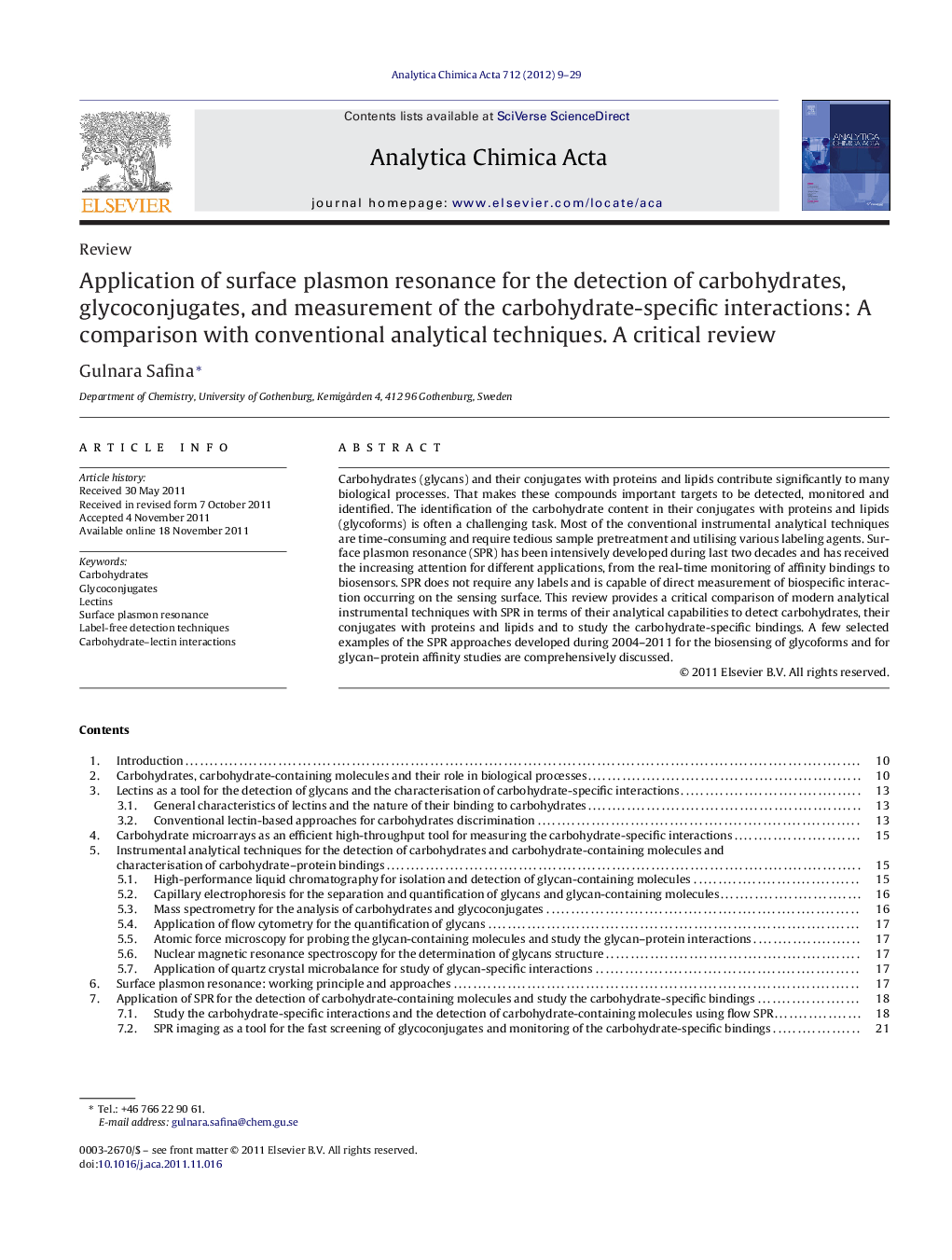| Article ID | Journal | Published Year | Pages | File Type |
|---|---|---|---|---|
| 1166464 | Analytica Chimica Acta | 2012 | 21 Pages |
Carbohydrates (glycans) and their conjugates with proteins and lipids contribute significantly to many biological processes. That makes these compounds important targets to be detected, monitored and identified. The identification of the carbohydrate content in their conjugates with proteins and lipids (glycoforms) is often a challenging task. Most of the conventional instrumental analytical techniques are time-consuming and require tedious sample pretreatment and utilising various labeling agents. Surface plasmon resonance (SPR) has been intensively developed during last two decades and has received the increasing attention for different applications, from the real-time monitoring of affinity bindings to biosensors. SPR does not require any labels and is capable of direct measurement of biospecific interaction occurring on the sensing surface. This review provides a critical comparison of modern analytical instrumental techniques with SPR in terms of their analytical capabilities to detect carbohydrates, their conjugates with proteins and lipids and to study the carbohydrate-specific bindings. A few selected examples of the SPR approaches developed during 2004–2011 for the biosensing of glycoforms and for glycan–protein affinity studies are comprehensively discussed.
Graphical abstractFigure optionsDownload full-size imageDownload as PowerPoint slideHighlights► Comprehensive overview of the analytical techniques for the assay of glycoforms is given. ► Special emphasis on surface plasmon resonance (SPR) for the assay of glycoforms is done. ► Different SPR techniques and approaches for the assay of glycoforms are highlighted. ► Critical comparison of the analytical techniques/methods with SPR for the assay of glycoforms is provided.
